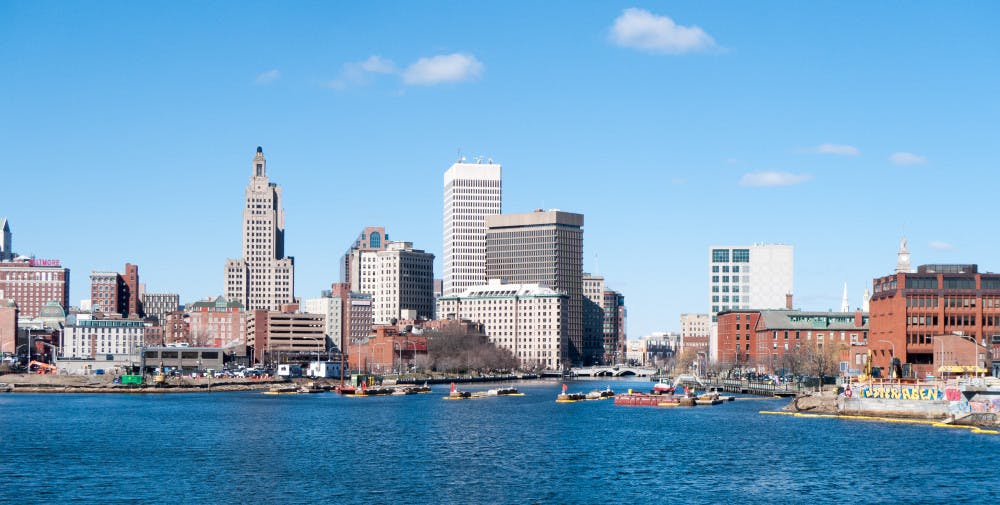Before 2011, 5,000 square feet of land near Armory Park was abandoned. The owner was not paying property taxes and the plot was lead-ridden.
Since 2016, Providence has identified 860 similarly vacant and abandoned properties as of April 1, wrote Kevin Aherne, director of communications for Providence Planning and Development, in an email to The Herald. This number is up from November 2017, when there were 747 vacant and abandoned properties, according to a Community Conversation Presentation by Everyhome, a housing rehabilitation program.
The vacant and abandoned properties have been a problem for the city, primarily since the foreclosure bubble in the late 2000s. “Rhode Island, and Providence in particular, were identified as areas ‘hardest hit’ by the foreclosure crisis at the end of the last decade according to the U.S. Treasury,” Aherne wrote. “The mortgage foreclosure crisis of the late 2000s created an epidemic of vacant and abandoned properties throughout neighborhoods and cities across the United States.”
Within the city, the rate of occurrence of vacant and abandoned properties is higher west of the I-95 and lower on the east, which is where College Hill is situated, according to a HeatMap from Everyhome.
Differences in poverty, median house prices and the ratio of renters to owners all contribute to the disparity in the number of vacant and abandoned properties throughout Providence, said Sharon Steele, acting president of the Jewelry District Association.
The median household income in the East Side of Providence is $64,447, while the median household income everywhere else is $32,599, according to HousingWorksRI’s 2018 Housing Fact Book. Median single family house prices sit around $570,000 in the East Side and $168,000 in the rest of the city. The ratio of renters to owners is 43-57 in the East Side and 32-68 in the rest of the city.
The different rates of vacancies exacerbate socioeconomic differences between the two regions of Providence, Steele said.
Steele said the East Side has “high demand and limited supply. … If those forces are at play, clearly, those neighborhoods are not going to be ripe for the kinds of, shall we say, negative aspects that befall communities that are not blessed with the same demand-supply economics.” Economic activity such as the historic rehabilitation of Downtown Providence and the development of the Jewelry District also contributes to lower vacancy rates, she added.
Aherne works with EveryHome, which aims “to revitalize and fill every vacant and abandoned home in the City of Providence,” according to their website. The program hopes to preemptively spot potential vacant properties and support the residents within.
“The city is aggressively working to abate this issue, and significant progress has been made during the short existence of the program,” Aherne wrote. The work of spotting and restoring these properties is complicated by the fact that each vacancy violates different portions of the housing code, requiring a unique solution.
“Trying to figure out who owns (the vacant property) and who’s responsible for it has been the consistent problem for the city,” said Brenda Clement, director of HousingWorksRI at Roger Williams University. “Obviously, every city that went through the foreclosure bubble has the same problem.”
“We were essentially the subprime capital of the world right before the bubble burst in 2008 and 2009, so we had disproportionately higher numbers of those properties fall into foreclosure and fall into that whole cycle,” Clement said. “We also are in a state where we do not put a lot of resources into housing from our state budget.”
To return properties to local ownership and bring them up to code, Clement suggested residents work on their own to rehabilitate these properties as long as they are not too dilapidated for safe work. Sidewalk Ends Farm is one such example, a chemical-free farming operation that runs in the formerly abandoned plot of land near Armory Park.
“(The farmers) somehow got a hold of (the owner) and got his permission to farm there,” said Dawn King, director of undergraduate studies for the Institute at Brown for Environment and Society, describing the potential for urban gardens to move in to vacant lots.
Clement added that Providence’s “anchor institutions,” such as hospitals and universities, should contribute to housing in the city. These institutions need to “contribute to a trust fund or agree to build two more graduate housing dorms or something like that. As a city, we also haven’t necessarily been as artful about that in negotiating with them.”
“I think Brown and others are starting to realize they have pretty big market impacts,” Clement said. “They need to do more,” but Providence also needs to incentivize these contributions from institutions.
“Providence is not just the East Providence or Downtown areas, we’re 25 neighborhoods in total,” said Rachel Robinson, director of preservation for the Providence Preservation Society. Robinson also pointed to preservation as a possible tool for helping neighborhoods unduly affected by historically low housing prices and high rates of vacancy.





